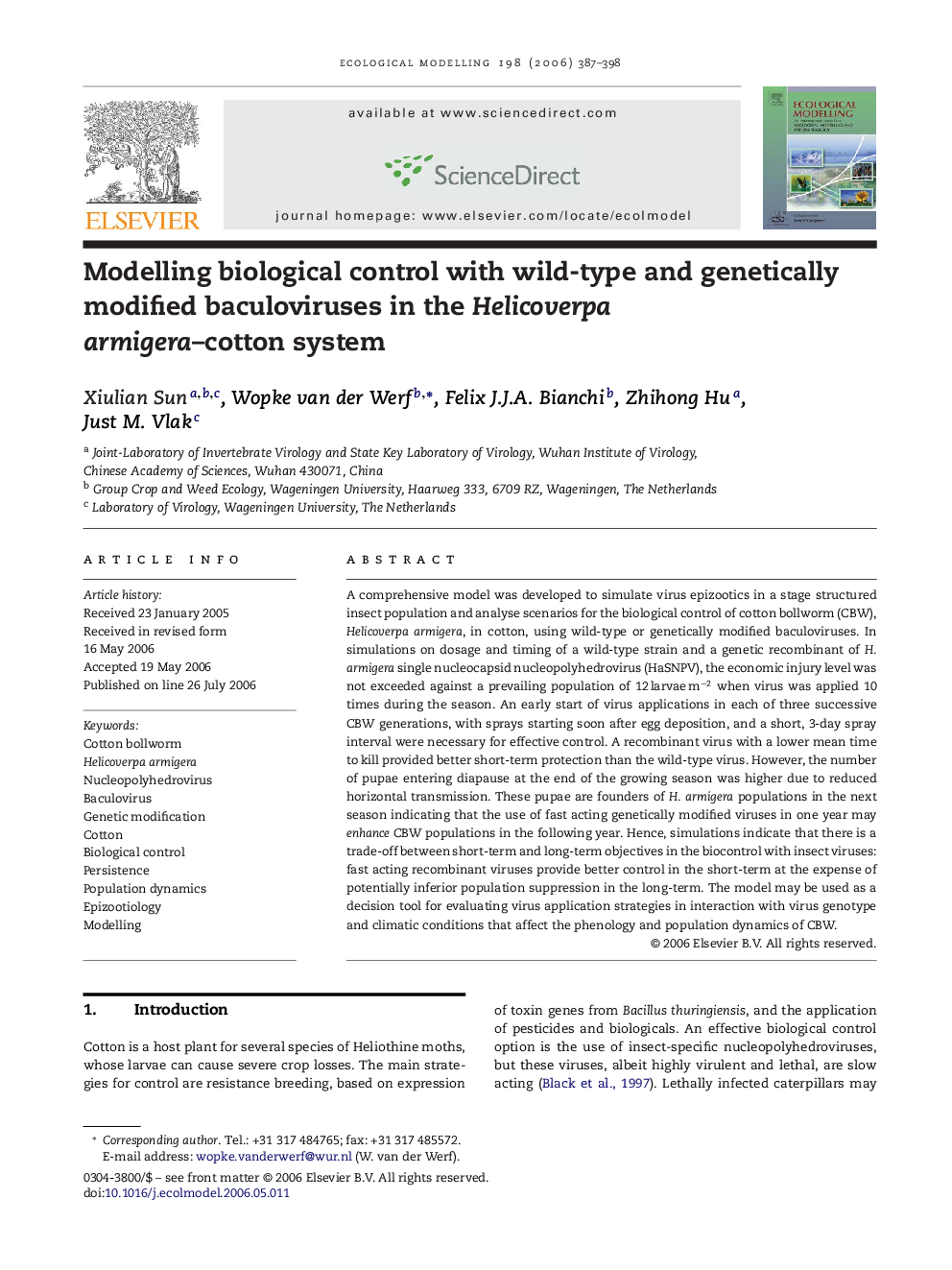| Article ID | Journal | Published Year | Pages | File Type |
|---|---|---|---|---|
| 4379063 | Ecological Modelling | 2006 | 12 Pages |
Abstract
A comprehensive model was developed to simulate virus epizootics in a stage structured insect population and analyse scenarios for the biological control of cotton bollworm (CBW), Helicoverpa armigera, in cotton, using wild-type or genetically modified baculoviruses. In simulations on dosage and timing of a wild-type strain and a genetic recombinant of H. armigera single nucleocapsid nucleopolyhedrovirus (HaSNPV), the economic injury level was not exceeded against a prevailing population of 12 larvae mâ2 when virus was applied 10 times during the season. An early start of virus applications in each of three successive CBW generations, with sprays starting soon after egg deposition, and a short, 3-day spray interval were necessary for effective control. A recombinant virus with a lower mean time to kill provided better short-term protection than the wild-type virus. However, the number of pupae entering diapause at the end of the growing season was higher due to reduced horizontal transmission. These pupae are founders of H. armigera populations in the next season indicating that the use of fast acting genetically modified viruses in one year may enhance CBW populations in the following year. Hence, simulations indicate that there is a trade-off between short-term and long-term objectives in the biocontrol with insect viruses: fast acting recombinant viruses provide better control in the short-term at the expense of potentially inferior population suppression in the long-term. The model may be used as a decision tool for evaluating virus application strategies in interaction with virus genotype and climatic conditions that affect the phenology and population dynamics of CBW.
Keywords
Related Topics
Life Sciences
Agricultural and Biological Sciences
Ecology, Evolution, Behavior and Systematics
Authors
Xiulian Sun, Wopke van der Werf, Felix J.J.A. Bianchi, Zhihong Hu, Just M. Vlak,
